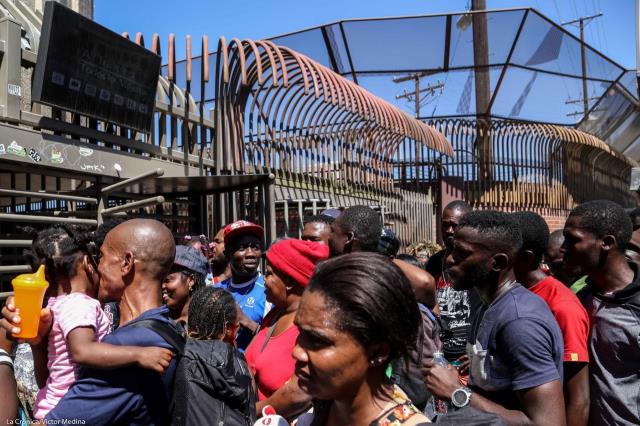Infográfico
The Screening Process for Refugee Entry into the United States
Publicado el 24 de octubre de 2016
por Amy Pope en whitehouse.gov.


- Many refugee applicants identify themselves to the U.N. Refugee Agency, UNHCR. UNHCR, then:
- Collects identifying documents
- Performs initial assessment
- Collects biodata: name, address, birthday, place of birth, etc.
- Collects biometrics: iris scans (for Syrians, and other refugee populations in the Middle East)
- Interviews applicants to confirm refugee status and the need for resettlement
- Initial information checked again
- Only applicants who are strong candidates for resettlement move forward (less than 1% of global refugee population).
- Applicants are received by a federally-funded Resettlement Support Center (RSC):
- Collects identifying documents
- Creates an applicant file
- Compiles information to conduct biographic security checks
- Biographic security checks start with enhanced interagency security checks
-
- U.S. security agencies screen the candidate, including:
- National Counterterrorism Center/Intelligence Community
- FBI
- Department of Homeland Security
- State Department
- The screening looks for indicators, like:
- Information that the individual is a security risk
- Connections to known bad actors
- Outstanding warrants/immigration or criminal violations
- DHS conducts an enhanced review of Syrian cases, which may be referred to USCIS Fraud Detection and National Security Directorate for review. Research that is used by the interviewing officer informs lines of question related to the applicant’s eligibility and credibility.
- U.S. security agencies screen the candidate, including:
- Department of Homeland Security (DHS)/USCIS interview:
- Interviews are conducted by USCIS Officers specially trained for interviews
- Fingerprints are collected and submitted (biometric check)
- Re-interviews can be conducted if fingerprint results or new information raises questions. If new biographic information is identified by USCIS at an interview, additional security checks on the information are conducted. USCIS may place a case on hold to do additional research or investigation. Otherwise, the process continues.
- Biometric security checks:
- Applicant’s fingerprints are taken by U.S. government employees
- Fingerprints are screened against the FBI’s biometric database.
- Fingerprints are screened against the DHS biometric database, containing watch-list information and previous immigration encounters in the U.S. and overseas.
- Fingerprints are screened against the U.S. Department of Defense biometric database, which includes fingerprint records captured in Iraq and other locations.
- If not already halted, this is the end point for cases with security concerns. Otherwise, the process continues.
- Applicant’s fingerprints are taken by U.S. government employees
- Medical check:
- The need for medical screening is determined
- This is the end point for cases denied due to medical reasons. Refugees may be provided medical treatment for communicable diseases such as tuberculosis.
- Cultural orientation and assignment to domestic resettlement locations:
- Applicants complete cultural orientation classes.
- An assessment is made by a U.S.-based non-governmental organization to determine the best resettlement location for the candidate(s). Considerations include:
- Family; candidates with family in a certain area may be placed in that area.
- Health; a candidate with asthma may be matched to certain regions.
- A location is chosen.
- Travel:
- International Organization for Migration books travel
- Prior to entry in the United States, applicants are subject to:
- Screening from the U.S. Customs and Border Protection’s National Targeting Center-Passenger
- The Transportation Security Administration’s Secure Flight Program
- This is the end point for some applicants. Applicants who have no flags continue the process.
- U.S. Arrival:
- All refugees are required to apply for a green card within a year of their arrival to the United States, which triggers:
- Another set of security procedures with the U.S. government.
- Refugees are woven into the rich fabric of American society!
- All refugees are required to apply for a green card within a year of their arrival to the United States, which triggers:
?Amy Pope is Deputy Assistant to the President for Homeland Security
Correction: A previous version of the graphic and blog post stated in step 2 that the name of the RSC was the Refugee Support Center. This has been corrected to the proper name, the Resettlement Support Center.
-
Clasificación
Nivel legislativo
Federal 1
País(es)
Tema(s) general(es)
Tema(s) especifico(s)
